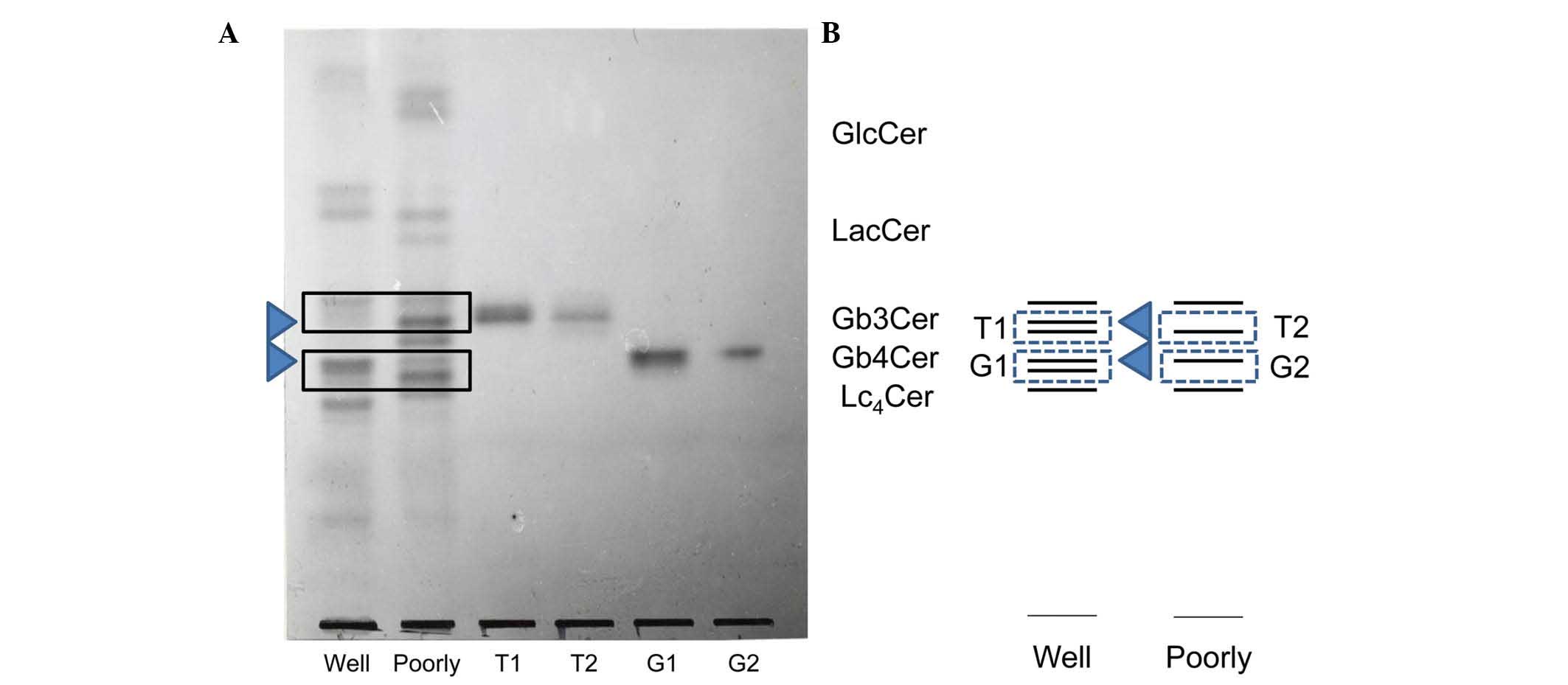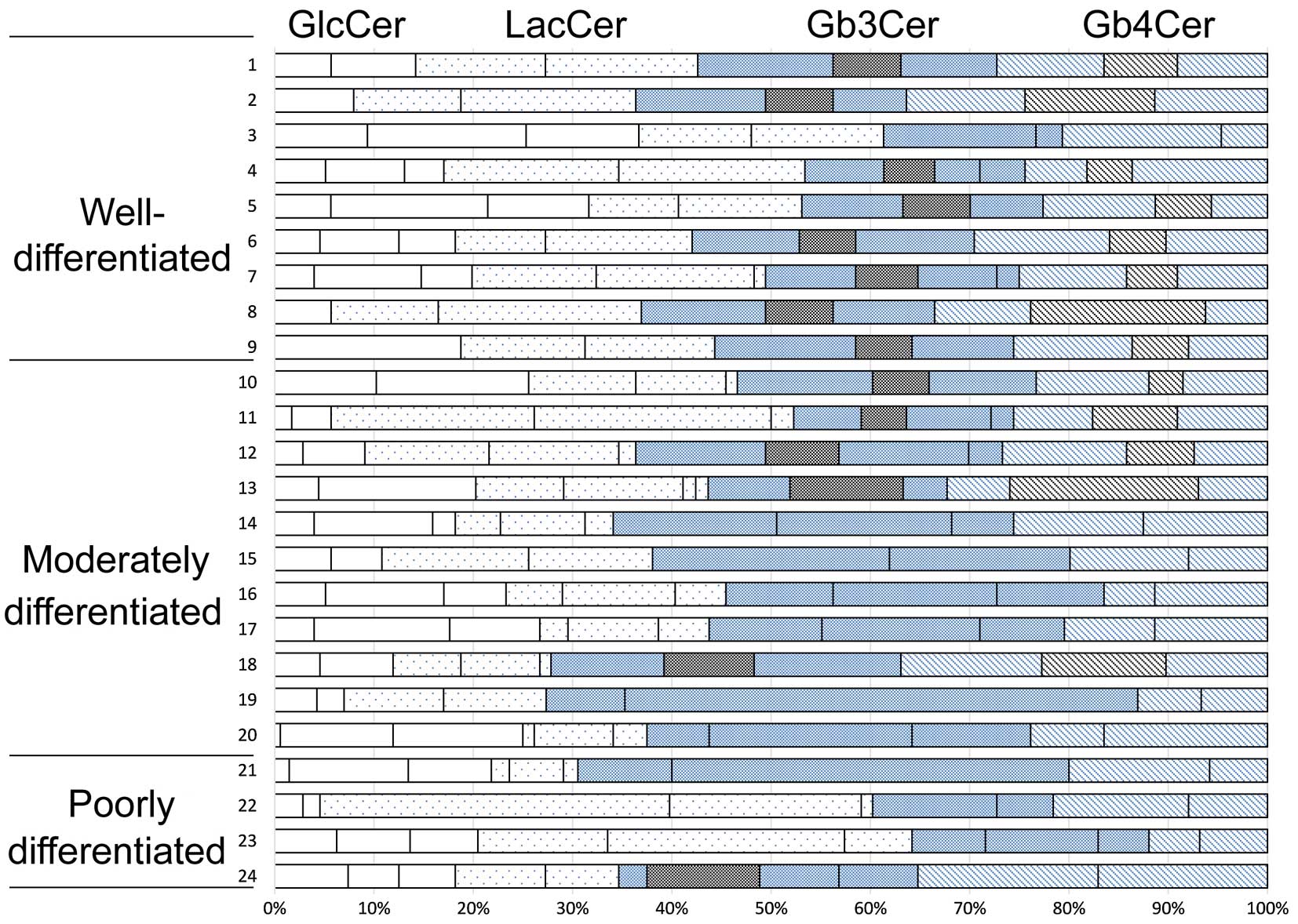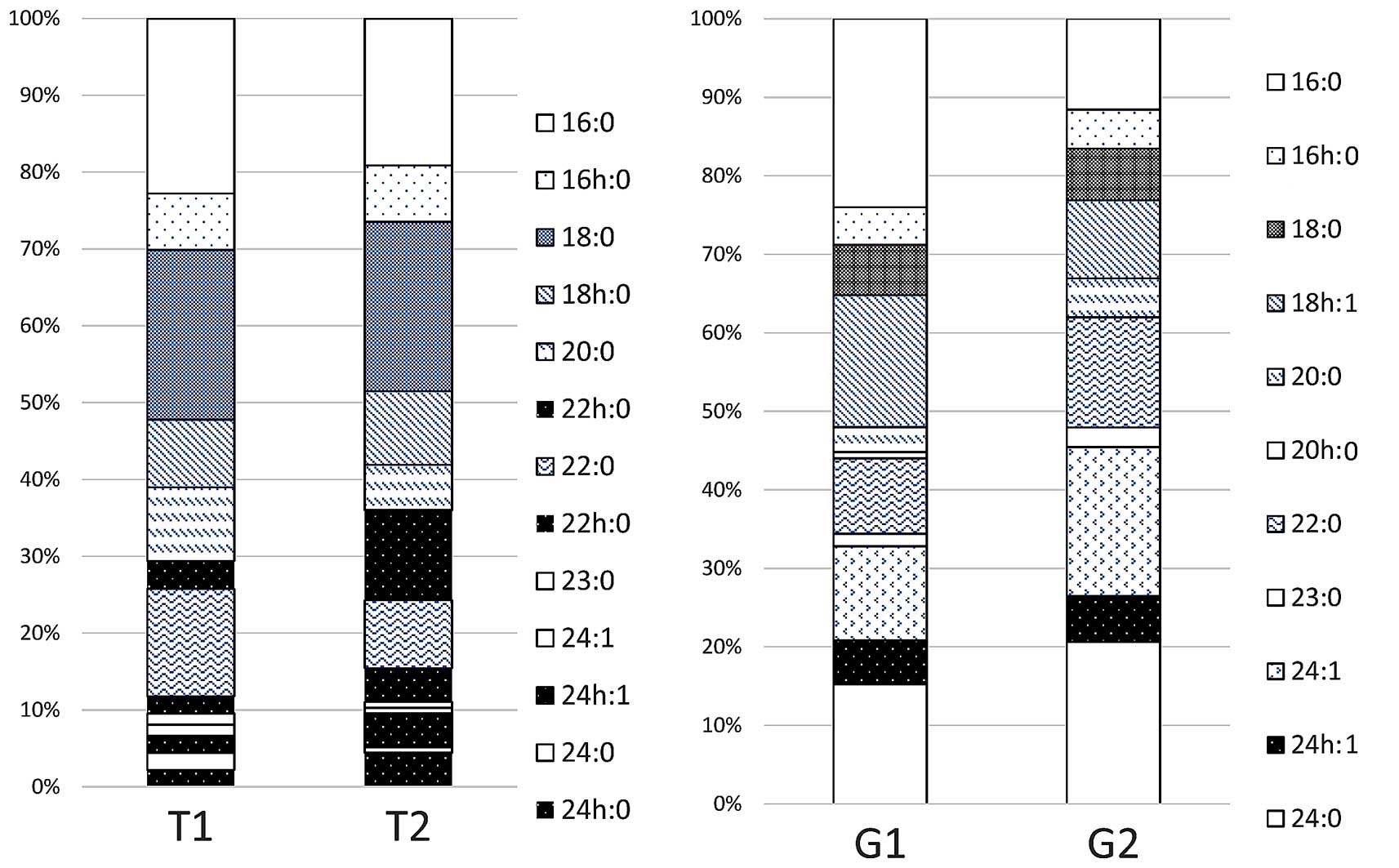Enhanced expression of hydroxylated ceramide in well‑differentiated endometrial adenocarcinoma
- Authors:
- Published online on: November 22, 2016 https://doi.org/10.3892/ol.2016.5410
- Pages: 45-50
-
Copyright: © Tajima et al. This is an open access article distributed under the terms of Creative Commons Attribution License.
Metrics:
Total
Views: 0 (Spandidos Publications: | PMC Statistics:
)
Total PDF Downloads: 0 (Spandidos Publications: | PMC Statistics:
)
Abstract
Based on our previous analysis of neutral glycolipids in the human endometrium, the present authors already reported that the concentrations of glucosylceramide, lactosylceramide and globotriaosylceramide (Gb3Cer), in which both fatty acids and sphingosines in the ceramides are hydroxylated, exhibit a marked increase during the luteal phase of the menstrual cycle. It is also well known that poorly differentiated endometrial adenocarcinoma exhibits a more rapid progression and a worse response to therapy than well‑differentiated endometrial adenocarcinoma. To examine the molecular background of well‑differentiated and poorly differentiated cancers, the levels of neutral glycolipids in tumor tissues from endometrial carcinoma displaying different degrees of differentiation were measured. The composition of neutral glycolipids in tumor tissues was determined, and ceramide structures that were specifically expressed in well‑differentiated endometrial carcinomas were investigated using biochemical analytical methods, including lipid extraction, enzyme digestion, thin‑layer chromatography (TLC), gas‑liquid chromatography and mass spectrometry. Well‑differentiated adenocarcinoma contained numerous structurally unknown glycolipids that exhibited slower migration than globotetraosylceramide (Gb4Cer). In the case of Gb3Cer, three bands appeared on TLC in well‑differentiated cancer, but only two bands appeared in the poorly‑differentiated cancer. This difference was associated with the fatty acid composition of ceramide, since non‑hydroxy fatty acids with ≥20 carbon atoms were increased in well‑differentiated cancer, while α‑hydroxy fatty acids were increased in poorly differentiated cancer. Similarly, there were two bands on TLC of Gb4Cer from well‑differentiated cancer, but only one band in poorly differentiated cancer, and the long‑chain base of ceramide was observed to contain phytosphingosine in well‑differentiated cancer. It was demonstrated in endometrial cancer that the structure of ceramide molecules changes with the extent of tumor differentiation. These findings suggest that hydroxylated ceramides contribute to the well‑differentiated phenotype of endometrial adenocarcinoma.















